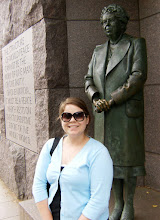Topic 10
Holly Tetreault
Emotional and Behavioral Disorders
Function Based Interventions for Students
The Basics
According to IDEA 2007, as presented by the Council for Exceptional Children, a functional behavior assessment is conducted when a behavior is determined to impede the learning of him/herself and others. A function-based intervention is put into place when the student is non-responsive to primary and secondary positive behaviors supports. The behavior should first be identified; data collected to show that current interventions are not successful, and finally the plan will contain a replacement behavior that can replace the current behavior. The function refers to why the student is doing what they’re doing. There are two major functions; to obtain something or avoid something. The function-based intervention is put into place and monitored to determine if it has replaced the original behavior with a positive or more acceptable behavior that still allows the student to acquire their needs.
Kansas Institute of Positive Behavior Supports
The following are three resources from the KIPBS site. A description is provided in addition to a link to the KIPBS page where more information can be found. Each resource will be utilized in the future to aide in function based interventions.
The interview form is used to collect information on a student during a Functional Behavioral Assessment. For an FBA to conducted it must be determined that the behavior occurs even with tier 1 and 2 interventions. The intervention should address the behavior that needs to be replaced. I personally used this form this year. A general education teacher completed it (as best as she could) on a student I was conducting an FBA on. In my schedule I am unable to observe the student as often as I would like and I do not witness many of the behaviors that occur in the classroom. This allows the teacher a form to constructively tell me about the behaviors.
The competing behavior diagram is used to determine the setting events, antecedent, and the behavior. From there the team determines what the desired behavior is and the replacement behavior. This allows the team to document what they hypothesize and the effectiveness of the interventions. The chart is extremely helpful in outlining what we often think but don’t often verbalize. For me it is an easy visual representation of the behaviors.

No comments:
Post a Comment